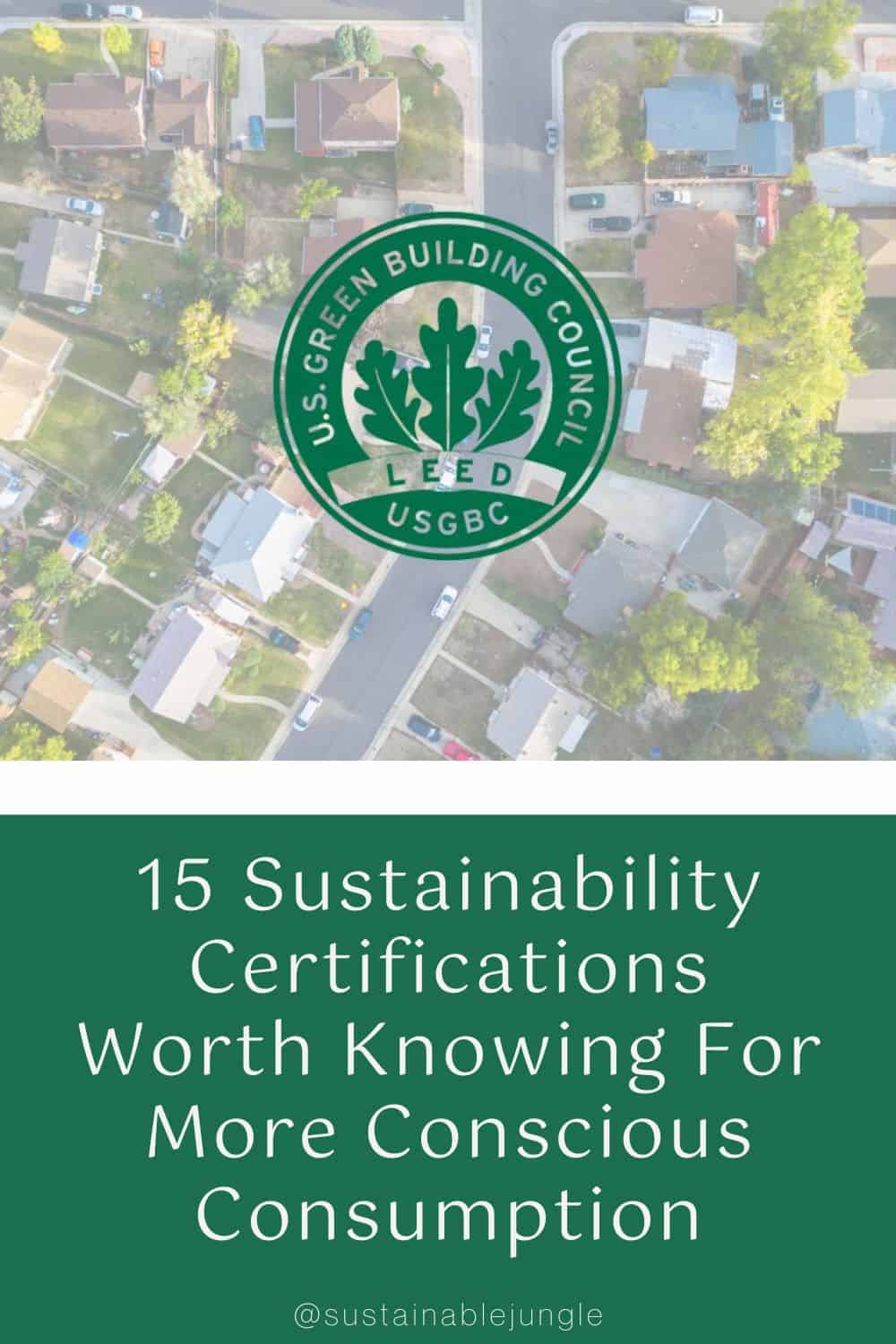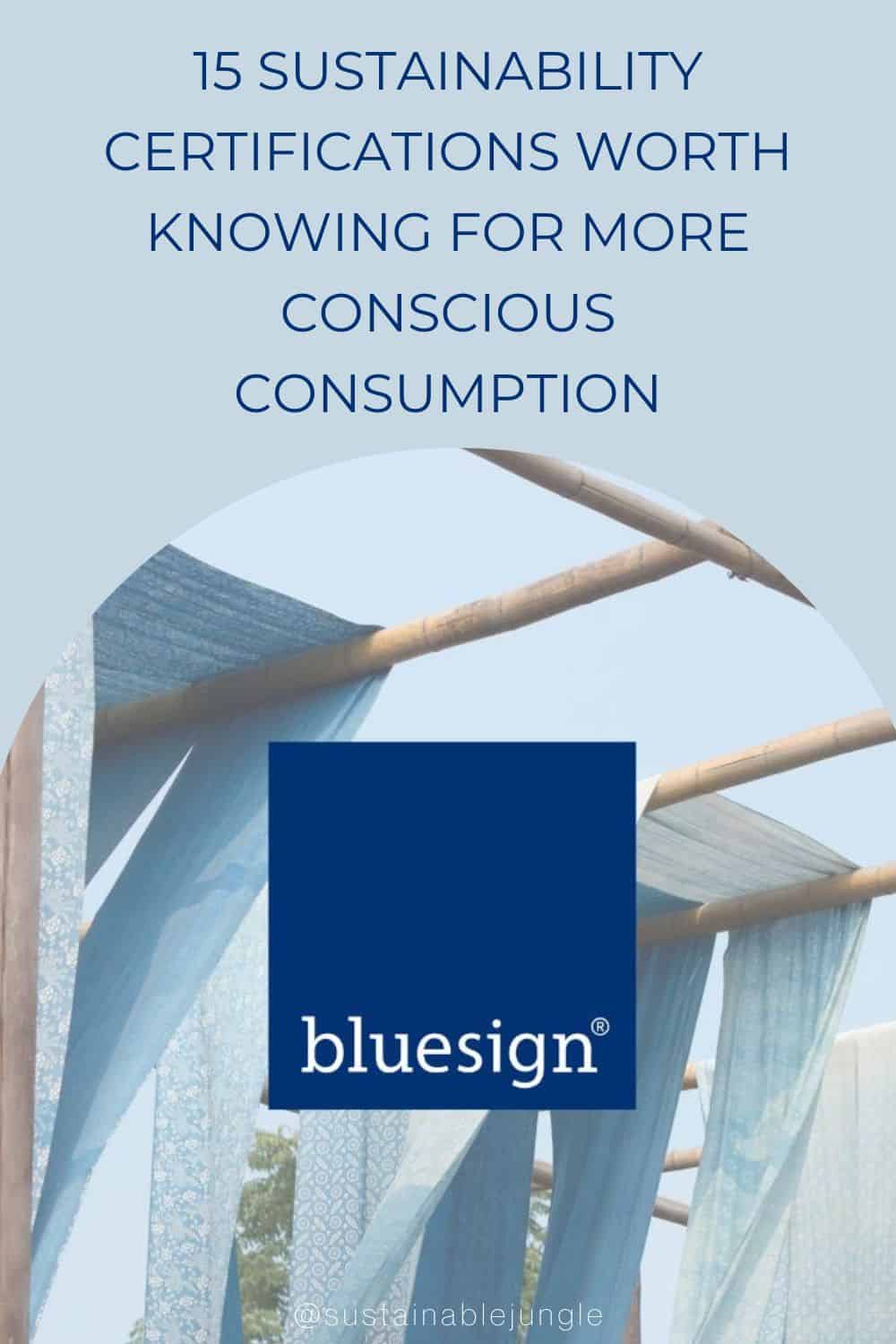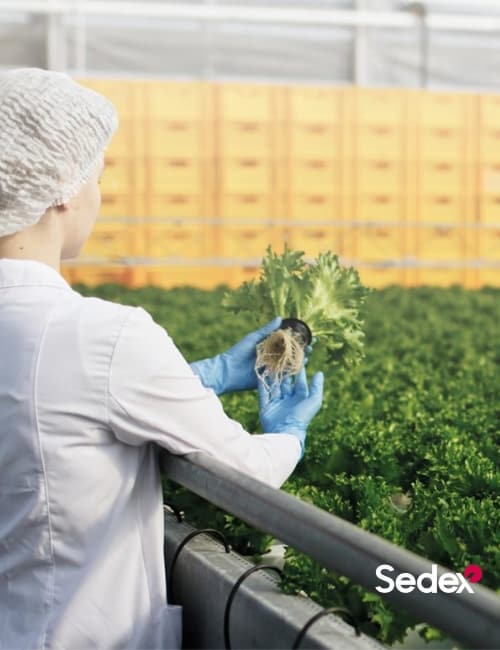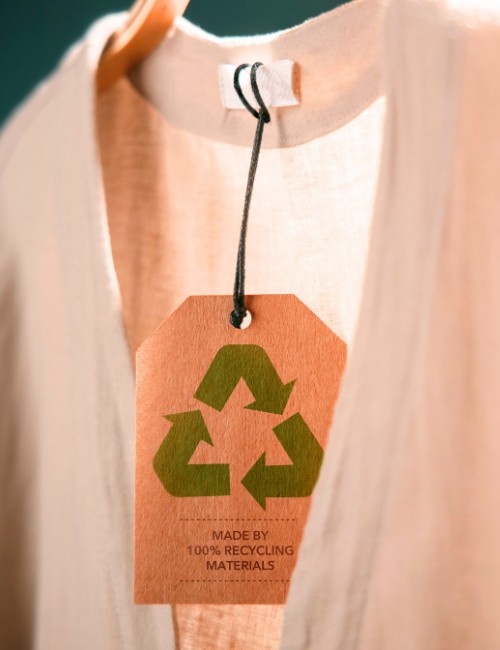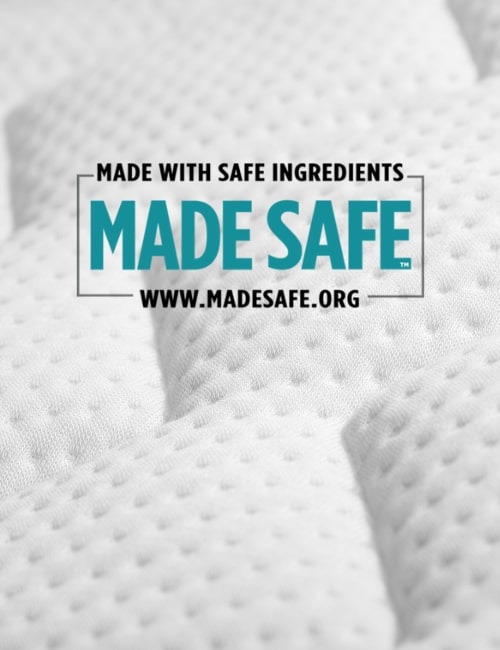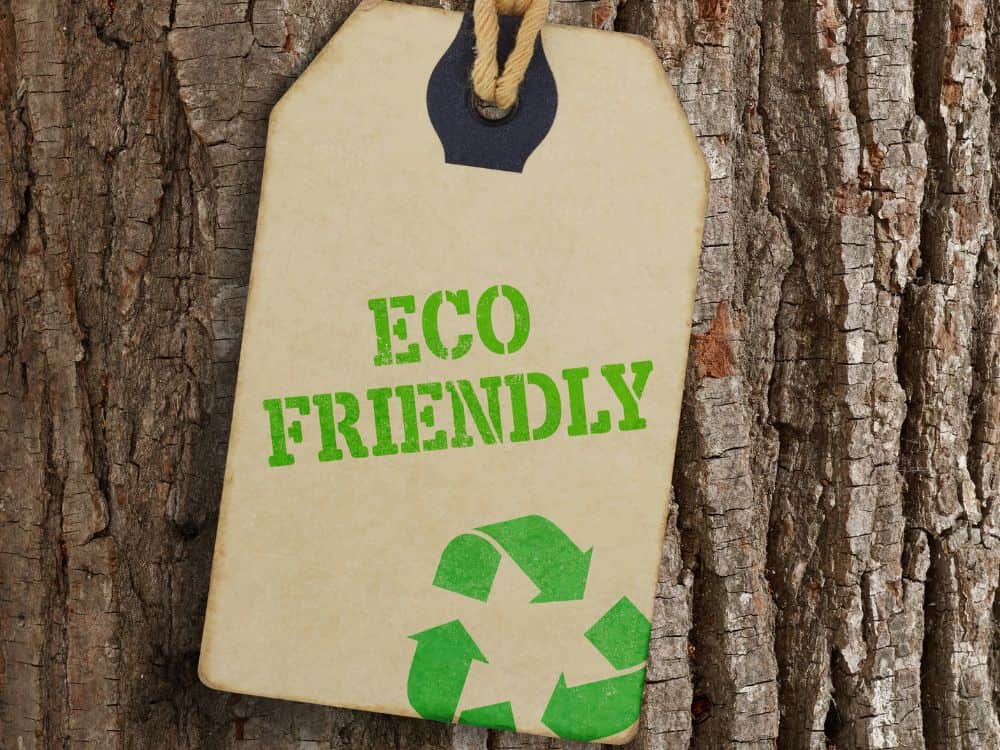
15 Sustainability Certifications Worth Knowing For More Conscious Consumption
Sustainability certifications set a baseline of best sustainability practices and products and foster trust with consumers.
These credentials are also living proof that organizations and consumers alike care to blossom a healthier, fairer, more just world.
That said, some certifications have been busted for greenwashing (even fraud!). And on the flip side, some businesses that are doing a lot of “good” lack the resources to invest in some of these pricier big-name environmental sustainability certification programs.
The truth is, certifications aren’t inherently a catch-all fool-proof solution for a more ethical and eco-friendly planet. That’s why we always encourage readers to do their own sleuthing and hold brands accountable.
To help in your search, we turned over every rock in the garden to find any secret moles or worms chewing at the truth behind these certs.
While by no means an exhaustive list of all sustainable and ethical certifications, here is our list of sustainability certifications we consider to be the most essential. And if you just want the highlights, watch our video for the 7 most common certifications to keep an eye out for.
What Are Sustainability Certifications?
You’ve probably seen any number of meaningless acronyms on the tags from your favorite organic clothing brands, but what is the purpose of sustainability certifications and ethical manufacturing certifications?
They are a sort of insignia awarded to brands and products that have been determined to uphold or exceed certain set standards and criteria indicating they reduce harmful impact on people and the planet.
While these standards vary by sustainability certification programs, each one provides its own idea of a framework for some aspect of sustainability—like low-impact sourcing, sustainable materials, or the absence of toxic chemicals.
Sustainability certifications for companies are awarded (after paying a hefty fee to apply, of course) after lab testing and/or audits by neutral third-party agencies.
You can find sustainability certifications for products like fashion and homewares, or for whole manufacturing processes and the buildings in which they occur.
Different ones cover different stages of the manufacturing or sourcing process, while some encompass the entire supply chain. Some verify products, while others certify whole entities.
It’s quite the garden variety and it can get confusing—and that’s without adding questions of legitimacy on top.
So the real answer to the question, “What are the best sustainability certifications?” is anyone that offers the transparency to consumers that it demands of the brands it certifies.
Sustainability is often a moving target, and the same goes with these certs. We aren’t striving for perfection here; we’re aiming to do better, and (hopefully) consistently so.
The Top Sustainability Certifications
Sustainable Sourcing Certifications
Sustainable Manufacturing Certifications
Non-Toxic & Sustainable Product Certifications
Sustainable Sourcing Certifications
1. Global Organic Textile Standard (GOTS)
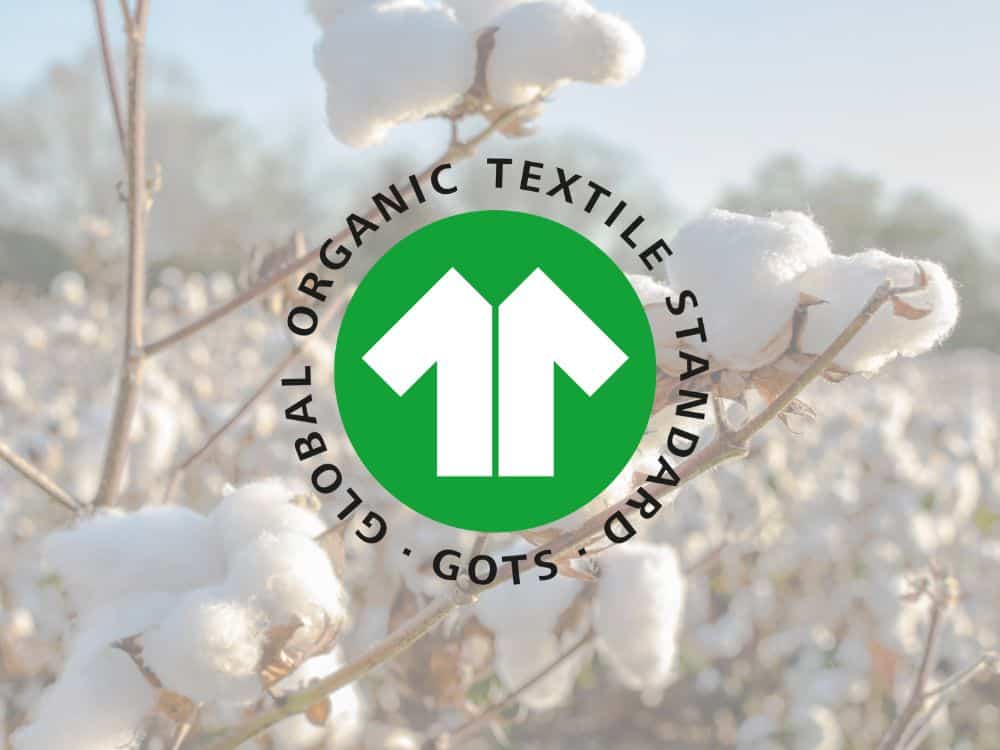
What GOTS Certifies: Apparel, home textiles, fiber products, yarns, fabrics, food contact materials, personal care products, and mattresses.
It tops the home textile and fashion sustainability certifications list in terms of most used and recognizable.
About GOTS & Certification Prerequisites
The Global Organic Textile Standard was established in 2006 by four organizations: The International Association of Natural Textile Industry, the Japan Organic Cotton Association, the Organic Trade Association, and the Soil Association.
If a product contains 95% or more organic material, it receives a GOTS-certified organic label. For those with 70% to 94% organic material, it must be disclosed on the product’s GOTS label.
While technically GOTS can be applied to any organic material, it’s become best known among cotton sustainability certifications (with the likes of BCI cotton—a much more dubious cotton certification).
The certification involves the entire product’s process from start to finish, including farmers, weavers, spinners, dying, and manufacturing.
All stages must be transparent and reported to an independent certifying body that approves the label for use. To ensure further transparency for consumers, the license number (or name) of the certified supplier database is likewise included and easily accessible online.
GOTS is not without recent controversy, with allegations surfacing of GOTS-certified “organic” cotton farms that aren’t using organic sustainability practices at all.
In response to some of their certifying bodies losing complete credibility (and even EU acceptance) over the matter, GOTS is developing new third-party organizations on the ground to “improve transparency and integrity.”
2. Fair Trade
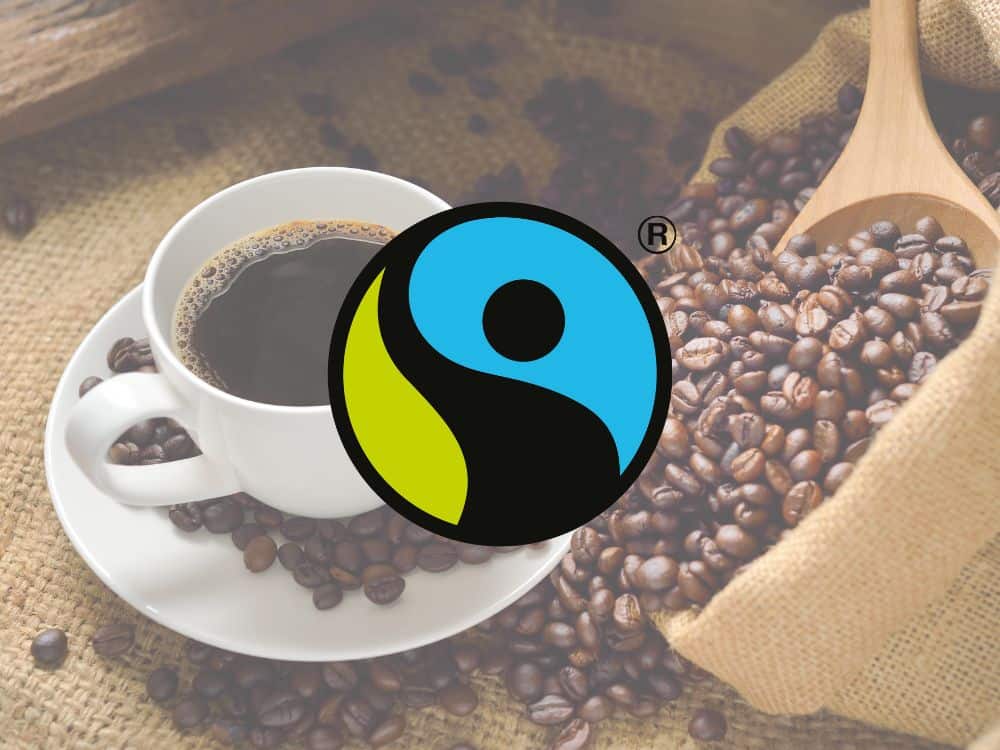
What Fair Trade Certifies: Varies slightly based on specific certifier but usually encompasses food (specifically sugar and cocoa), drink (coffee), apparel, handicrafts (like fair trade jewelry), minerals, and farms or mines of raw materials.
It’s one of the best certifications for sustainability and ethics alike—not to mention one of the most widely applicable.
About Fair Trade & Certification Prerequisites
The term “fair trade” actually refers to multiple independent bodies that all operate under slightly different names and definitions of what fair trade means.
The most common are Fair Trade Certified (also known as Fair Trade USA or Fair Trade America) and Fairtrade International.
While slightly different in approach, they all essentially mandate that any green business with the label be held to standards that include sustainable income for workers, care for the well-being of individual workers and communities, social empowerment, and environmental stewardship.
As such, fair trade is as much (if not more) an ethical certification as it is a sustainability-related certification. You could say it wears many fair trade hats.
A product, aspects of a product, or the facilities where a product is made can all receive certification.
Requirements are updated regularly that must be adhered to regarding workers’ rights, fair labor practices, supply chains, and sustainable land and environmental management.
Fairtrade International is widely regarded as the most reliable and trustworthy, thanks to its intensive audit by FLOCERT, an independent certification body.
3. Forest Stewardship Council®
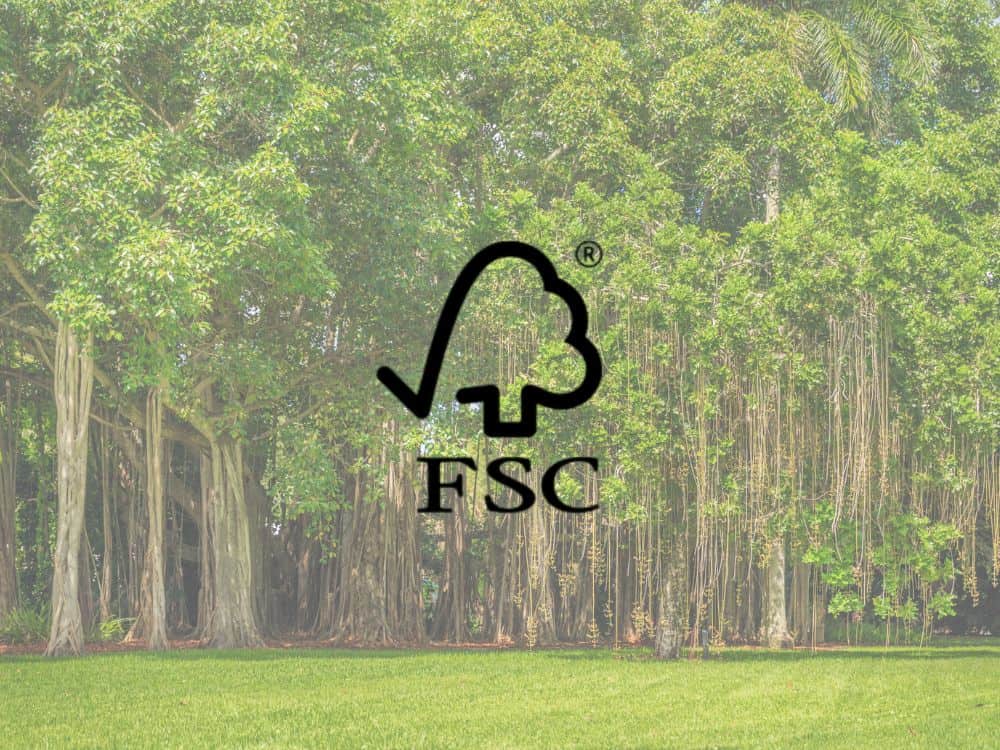
What FSC Certifies: Wood products, paper products (i.e. paper and cardboard packaging, zero waste office supplies), sanitary paper products, and any forest-based products (i.e. tree pulp-derived lyocell fabric and natural latex foam).
About FSC & Certification Prerequisites
The Forest Stewardship Council®, or FSC, is a member-led nonprofit with a mission to promote better environmental performance and management practices surrounding wood and paper products.
They’re the most recognized of all forest certifications, but there are actually three slightly different forest sustainability certifications under the FSC logo:
- 100% Products use material exclusively from FSC-certified forests
- Mix Products use both FSC-certified forest material and recycled material
- Recycled Products contain post-consumer and pre-consumer materials.
Additionally, there are two types of FSC certifications, which are Forest Management and Chain-of-Custody. For both, intensive applications and audits of environmental sustainability are integral to the certification process.
FSC recently came under (forest)fire for illegal timber trafficking and greenwashing allegations.
Since then, we’re sad to see the FSC has caused further upset by loosening rules to allow deforesters previously ineligible due to shady practices to now have access to the FSC label.
4. USDA Organic
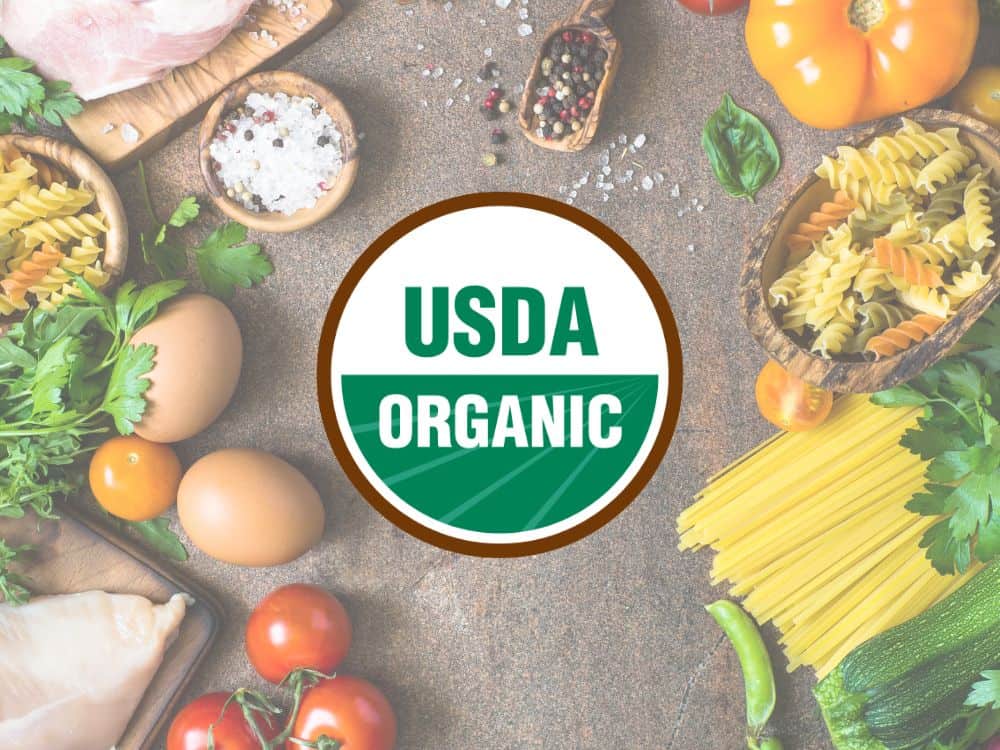
What USDA Organic Certifies: Organic food, drink, personal care items, and textiles
They’re most recognizable in terms of being among the best sustainability certifications for food.
About USDA Organic & Certification Prerequisites
The USDA National Organic Program, also known as USDA Organic, is “a label and certification system that verifies farmers or handling facilities located anywhere in the world comply with the USDA Organic Regulations”.
There are different rules and processes for products based on types, such as produce, meat, processed foods, multi-ingredient foods, or packaged foods.
According to the USDA, “becoming certified organic is a rigorous, multi-step process. The organic system is designed to verify that federally regulated organic production and processing methods are followed.”
The USDA Organic label is one of the most rigorous, monitored, transparent, and regulated labels in the US—and one of its only food sustainability certifications.
Products cannot be grown using toxic and synthetic pesticides and fertilizers, antibiotics, synthetic growth hormones, genetic engineering, artificial flavors, colors, preservatives, sewage sludge or irradiation.
To receive the label, companies must apply, be audited, and also receive sustainability professionals as agent for their final inspection report.
But is USDA Organic reliable?
The label hasn’t been without controversy, with past allegations including fake organic imports to the US and the issue of issue of hydroponics being labeled organic without building soil fertility.
5. Soil Association
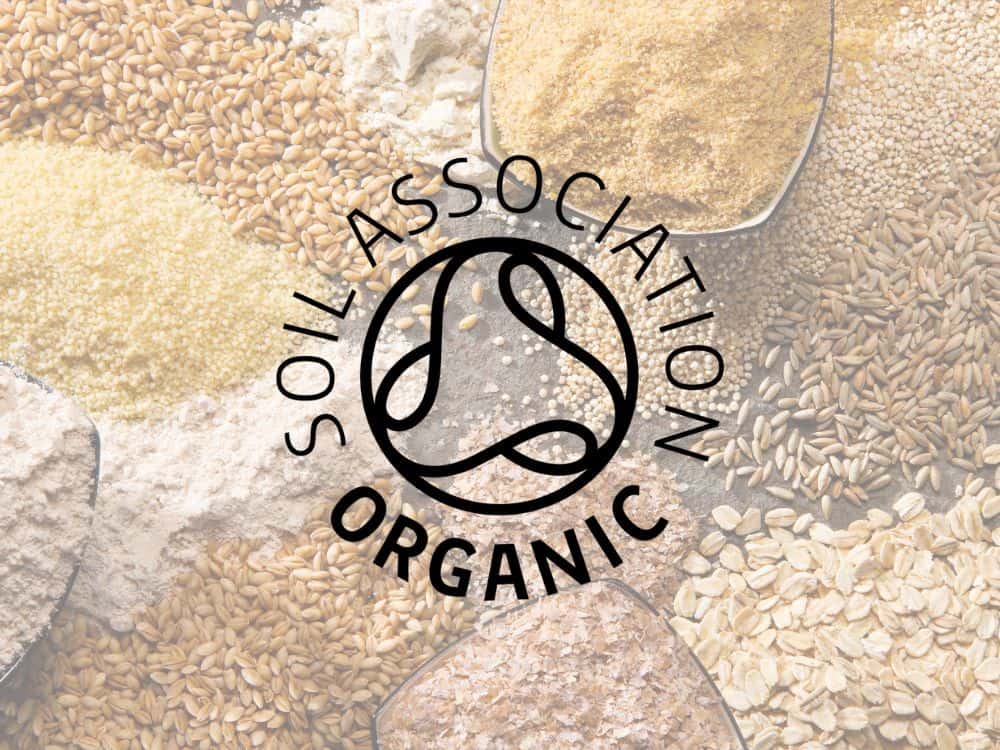
What Soil Association Certifies: Organic food, beverages, forestry, farming, textiles, and beauty and wellbeing products.
About Soil Association & Certification Prerequisites
Soil Association is the UK’s longest-established and largest organic certification body. They license more than 70% of the organic food for sale in England.
They are also a membership-based charity that campaigns for many causes that relate to healthy and humane food and farming.
The organization has a huge coverage beyond only food and beverage, which extends to food catering, cosmetics, clothes, textiles, agriculture, and forestry initiatives.
In order to receive the organization’s coveted stamp, farms, companies, and brands must go through a huge amount of work to prove they are organic.
A Soil Association-certified organic product has to contain at least 95% organic ingredients. If that amount is 70%-94%, a product can be certified by the Soil Association, but the manufacturer must indicate clearly.
Past criticisms of the Soil Association have looked at their sometimes vague use of terms. For example, “Organic farming… cuts the use of pesticides and antibiotics”.
What exactly do “cuts” constitute? How large a trace is permissible?
Yearly certification fees are affordable and vary depending on what a farm or product is certifying.
Sustainable Manufacturing Certifications
6. B Corporation
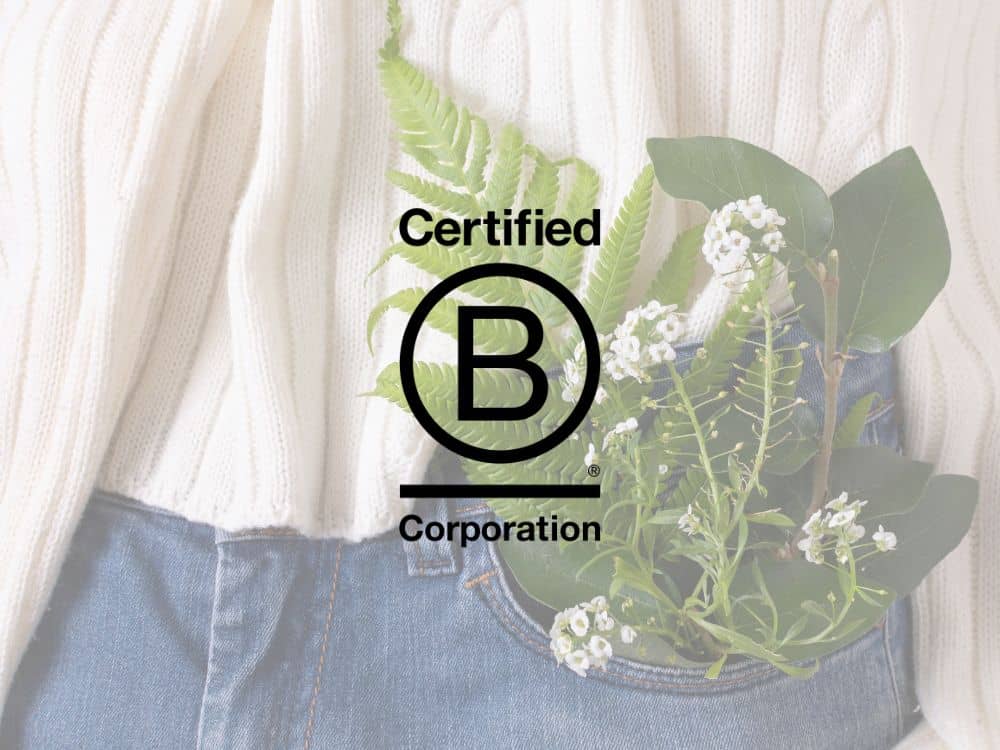
What B Corporation Certifies: Any for-profit business that pursues “social good”. You’ll find everything from B Corp banks to fashion brands.
About B Corporation & Certification Prerequisites
Often considered the “gold standard”, B Corporation (B Corp) is regarded as one of the best ESG certificates for overall environmental and social governance—despite a recent B Corp greenwashing firestorm over Nespresso’s inclusion.
3500+ companies in 77+ countries, such as Ben & Jerry’s, Danone, Dr. Bronner’s, and sustainable outdoor clothing maker Patagonia are accredited, which goes through a body independent of B Corp called B Labs Global.
These companies must receive a “minimum score” on their “B Impact assessment” in the certification process, which includes a thorough evaluation of the green business’ impact on the environment, workers, community, and consumers.
Every Certified B Corp and its impact scores are listed in a searchable online directory openly viewable by consumers.
While yearly reports are not mandated, companies must update their B Corp certification every three years.
Fees range from hundreds to tens of thousands depending on company size and worth. These large fees have also called into question the ethics of the certification body B Labs, whose funding relies on big membership money.
7. Cradle To Cradle (C2C)
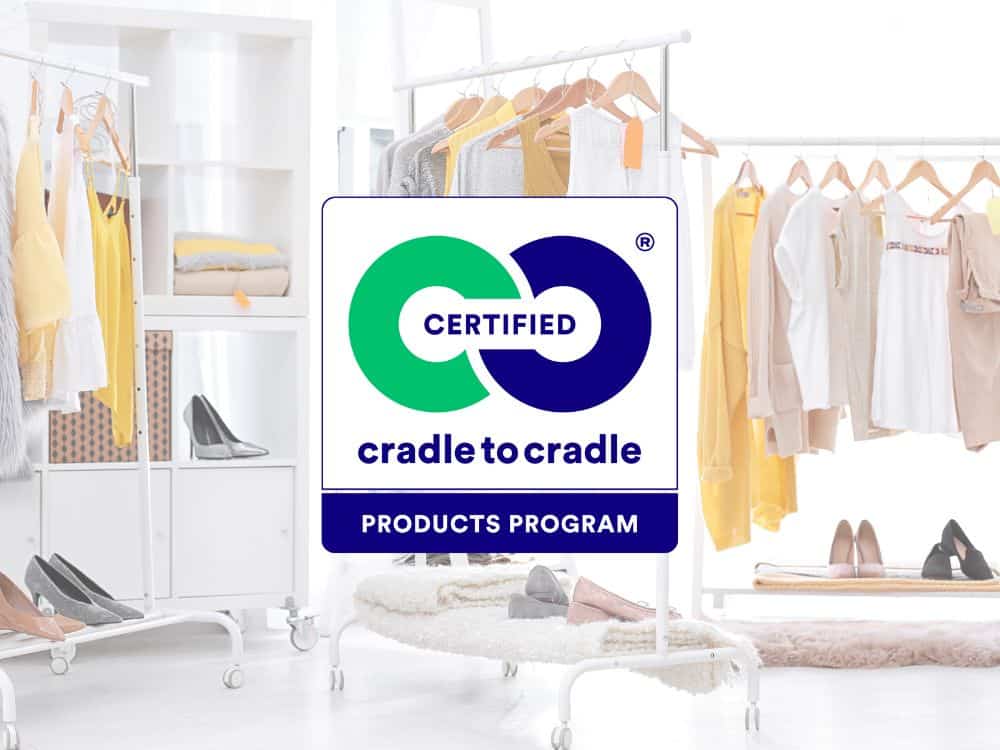
What Cradle To Cradle Certifies: textiles, clothes, fashion accessories, building products, home decor, personal care items, home cleaning products
About Cradle to Cradle Certified® & Certification Prerequisites
In their own words, Cradle to Cradle Certified® (C2C) “are powering the shift to a circular economy by setting the global standard for materials, products and systems that positively impact people and planet”.
Material Health, Product Circularity, Clean Air & Climate Protection, Water & Soil Stewardship, and Social Fairness are the five categories that each C2C Certified product is assessed in, to ensure the item is socially responsible, circular, and safe for both humans and the planet.
Products are certified via third-party verification and certifications are awarded by The Cradle to Cradle Products Innovation Institute.
C2C has an interesting origin story, as it was initially founded by the coauthors of the renowned sustainability book, “Cradle to Cradle: Remaking the Ways We Make Things.”
All of the design principles established in the book are the bedrock of the original Cradle to Cradle Product Standard.
It has gone through several versions that build on the previous as determined by a stakeholder engagement process, input from the public, a technical advisory group, market leaders, a standards steering committee, and the UN Sustainable Development Goals.
Most recently, C2C launched Version 4.0 of their standard, “the most ambitious and actionable standard yet for designing and making products today that enable a healthy, equitable and sustainable future”.
8. Leather Working Group (LWG)
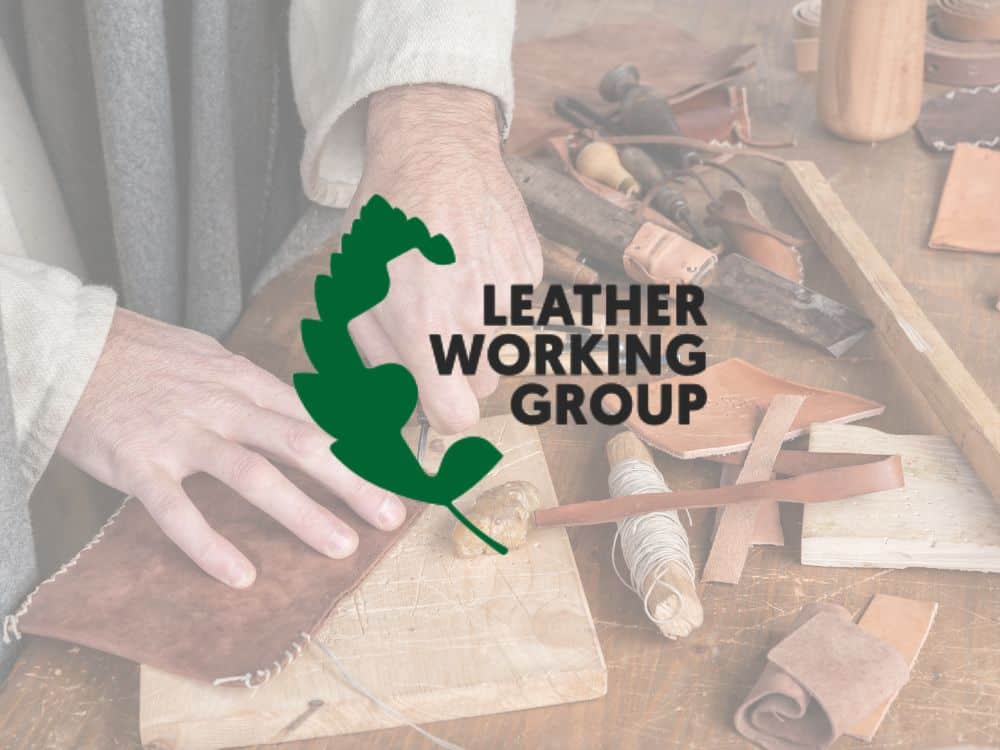
What Leather Working Group Certifies: Leather tanneries and traders.
About Leather Working Group & Certification Prerequisites
The Leather Working Group (LWG), “is a global multi-stakeholder community committed to building a sustainable future with responsible leather”.
Through efforts to minimize environmental impact, transparency of supply chains, and education, LWG hopes to create a more ecological and ethical leather industry.
The organization offers four different standards that assess the different players along the leather supply chain: the Leather Manufacturer Standard, Leather Trader Standard, Commissioning Manufacturer Standard, and Subcontractor Standard.
To become certified, there are four steps:
- Online registration
- Completion of a “Tannery of the Future” survey
- Implementation of feedback received from the survey
- Audit through an LWG-approved auditor.
Depending on audit performance in “critical sections”, the certified entities will be classified in one of four tiers: gold (85%), silver (75%), bronze (65%), and simply “audited” (50%).
These critical sections largely involve the chemicals used to tan the leather (ideally natural but at least chrome and heavy metal-free) as well as the measures in place to manage chemical offputs and wastewater used in the tanning process.
Once approved, there are pricey annual fees ranging from $2,500- $17,000 per year, depending on company revenue, gross sales, and size.
9. Global Recycle Standard (GRS)
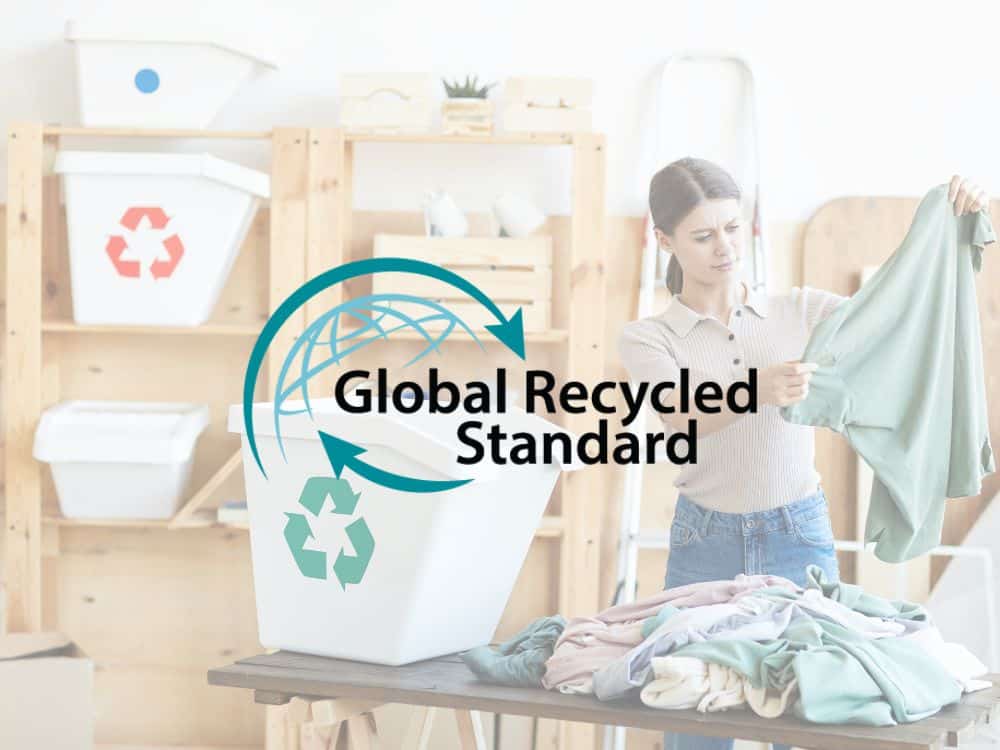
What Global Recycle Standard Certifies: Any textile, plastic, metal, and paper products made with recycled content.
About Global Recycle Standard & Certification Prerequisites
One of the many recycled content certifications, the Global Recycle Standard (GRS) was originally developed in 2008 as part of the battery of Control Union Certifications.
Ownership passed to the non-profit Textile Exchange in 2011—joining their similar sustainability certification Recycled Claim Standard (RCS)—and can now be found labeling products in over 50 countries.
Its primary purpose is to establish minimum recycled content (50%) using the ISO 14021 definition of recycled content. That 50% is the minimum to bear the consumer-facing GRS logo, but the minimum requirement for using GRS as a green business-to-business tool is only 20%.
Notably, the GRS certification process examines the entire supply chain (ginning, spinning, weaving, knitting, dyeing, printing, cutting, and sewing), and each entity “must take sufficient steps to preserve the identity of the input material”.
You’ll find no GRS-certified material produced using certain toxic chemicals deemed as problematic by REACH guidelines and the ZDHC Manufacturing Restricted Substances List.
An all-around ESG certificate, implementation upholds full traceability across the chain of custody, sets social standards in compliance with the International Labor Organization (ILO), and enforces environmental requirements regarding environmental management pf chemicals and waste, energy and water use, emissions, and more.
Audits are conducted by a variety of independent third-party testing agencies and contracts are valid for one year before recertifying is necessary.
There are currently no outstanding controversies or accusations of greenwashing that we could find against GRS, making it possibly one of the most reliable sustainability certifications for fashion.
10. Leadership in Energy and Environmental Design (LEED)
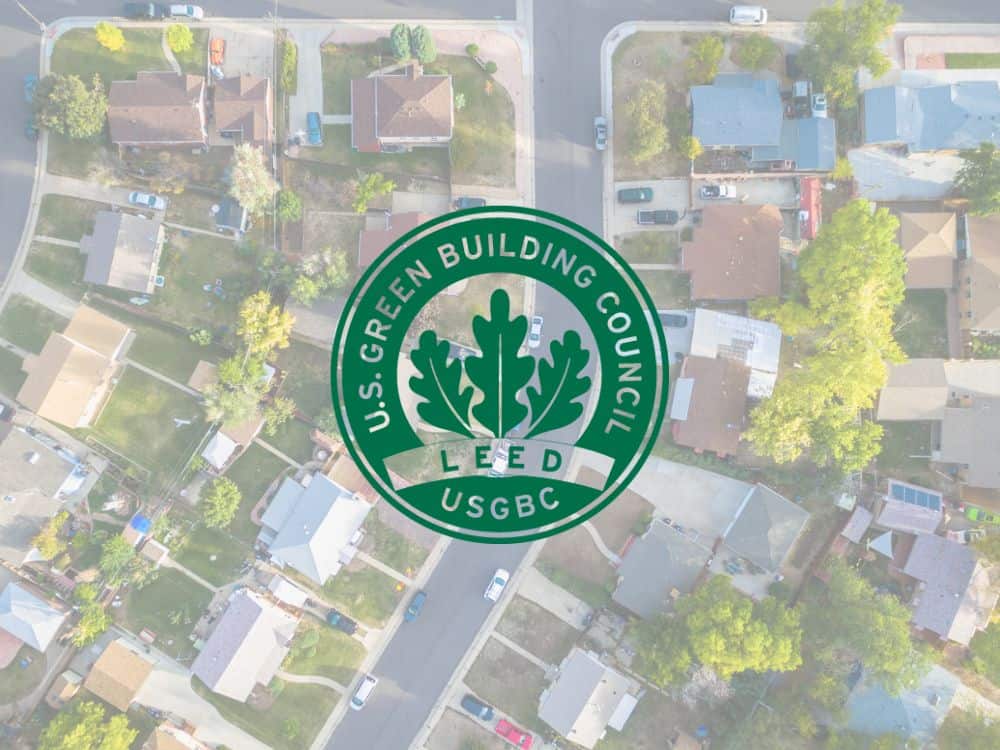
What LEED Certifies: Buildings, building developments, communities, neighborhoods, cities, and other forms of civil infrastructure.
It is at the forefront of sustainability design certifications.
About LEED & Certification Prerequisites
Leadership in Energy and Environmental Design (LEED) is a system created to evaluate and label how “green,” or environmentally sustainable a building, home, neighborhood, or city development is.
Run by the Green Building Council, LEED’s goal is to advocate for a more sustainable infrastructure through the building of better buildings that:
- Reduce contribution to climate change
- Promote renewable energy, demonstrate energy efficiency, and implement ways to conserve energy and energy management strategies
- Enhance human health and quality of life
- Protect and restore water resources, biodiversity, and ecosystem services
- Sustainable and regenerative material cycles
The system works on points, with four different tiers: Certified, Silver, Gold, and Platinum. They also offer a LEED Recertification and a LEED Zero rating for projects with net-zero carbon goals.
Projects go through rigorous review in the certification process, from examining sustainable interior design to the choice of the actual location.
According to LEED, “To achieve certification, a project earns points by adhering to prerequisites and credits that address carbon, energy, water, waste, transportation, materials, health and indoor environmental quality.”
However, industry watchdogs warn that LEED’s sustainability building certifications could be more a marketing tool to charge top dollar to virtue-signaling tenants than upholding the actual green performance of a building.
Non-Toxic & Sustainable Certifications for Products
11. OEKO-TEX®
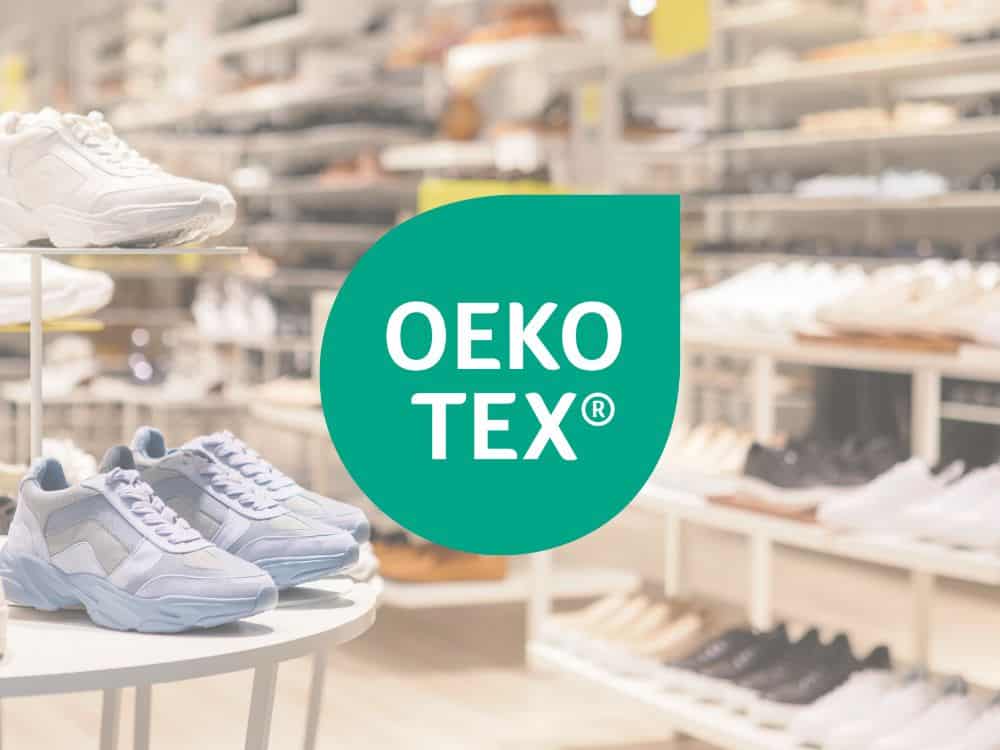
What OEKO-TEX® Certifies: Textiles (home, clothing, and footwear) and leather goods
About OEKO-TEX® & Certification Prerequisites
OEKO-TEX® is one of the world’s best-known labels for textile safety and there are several tiers of certifications under the OEKO-TEX® certification umbrella.
STANDARD 100 by OEKO-TEX® is the most common. It certified all components of a product (threads, zippers, tags, and trims included) are thoroughly tested for harmful, toxic substances to protect consumers’ health.
Their LEATHER STANDARD works similarly, though is specifically geared at leather goods.
A step above both is STeP by OEKO-TEX®. Short for Sustainable Textile & Leather Production, this not only considers the toxicity of materials, but factors in requirements for eco-friendly manufacturing, environmental management, worker safety, and social responsibility across the supply chain.
Unlike many other purely voluntary and unenforceable certifications, a STeP by OEKO-TEX® sustainability certification requires the signing of a Code of Conduct for legal accountability.
Finally, there’s MADE IN GREEN by OEKO-TEX®, a traceability initiative that allows consumers to see the manufacturing details of that product by scanning the tag’s QR code with their Label Check tool.
This certification requires both STANDARD 100 and STeP as prerequisites and can be applied to all textiles, including leather and non-leather goods.
It’s important to remember OEKO-TEX® is not an eco-label. It is first and foremost a health label for textiles—but fortunately what’s good for you tends to be better for the planet, too.
12. MADE SAFE®
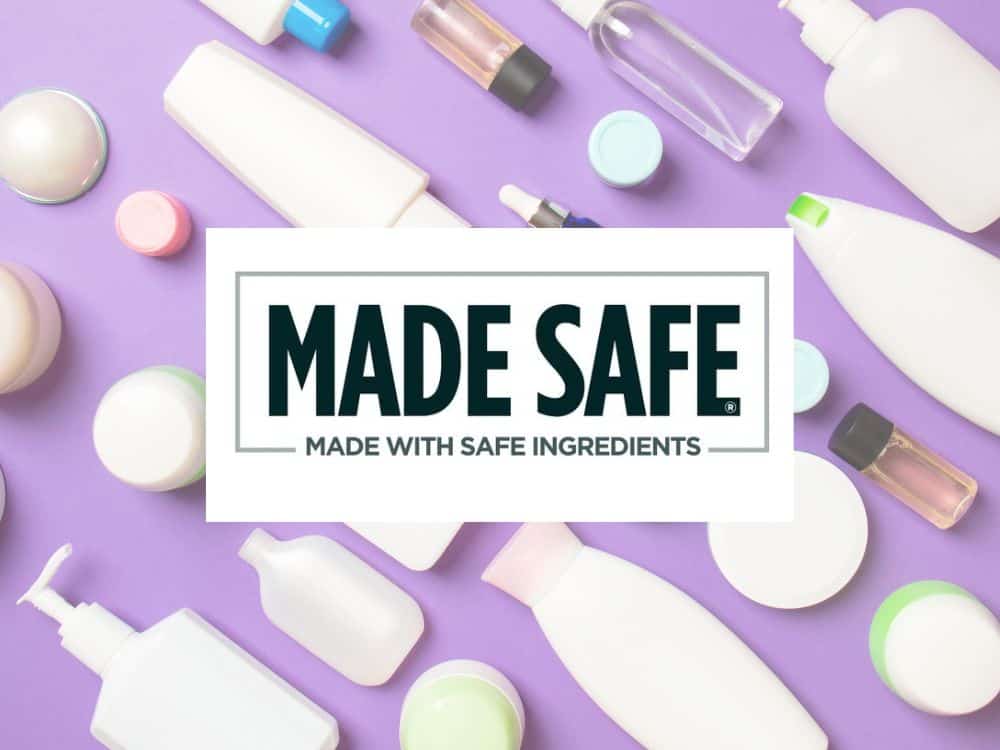
What MADE SAFE® Certifies: Non-toxic clothing, bedding and home textiles (like non-toxic rugs), personal care items, baby and child care items, and menstrual products.
About MADE SAFE & Certification Prerequisites
According to the MADE SAFE® Certification, their mission is to “revolutionize how consumer products are made, thereby eliminating the use of harmful chemicals from the marketplace to ensure a safe and sustainable future for all”.
Over 6500 chemicals are currently banned from the MADE SAFE® list.
For certification, companies send a list of their product’s ingredients and sub-ingredients, which MADE SAFE® first investigates against their list of banned chemicals and toxins.
If the product passes, ingredients are next put through MADE SAFE®’s chemical database screening. MADE SAFE® is unlike other certifications, in that it doesn’t allow toxins of any traceable amount whatsoever.
Lastly, all accepted “non-toxic” chemicals are checked for bioaccumulation, environmental persistence, soil and water toxicity, human health effects, and more. A report is then issued and all certified products are included in an accessible online database.
Keep in mind that the MADE SAFE® laurel is not a full-scope ESG certification, as it does not address product packaging, manufacturing ethics, labor practices, or sourcing issues like deforestation or biodiversity.
13. Environmental Working Group (EWG) Verified™
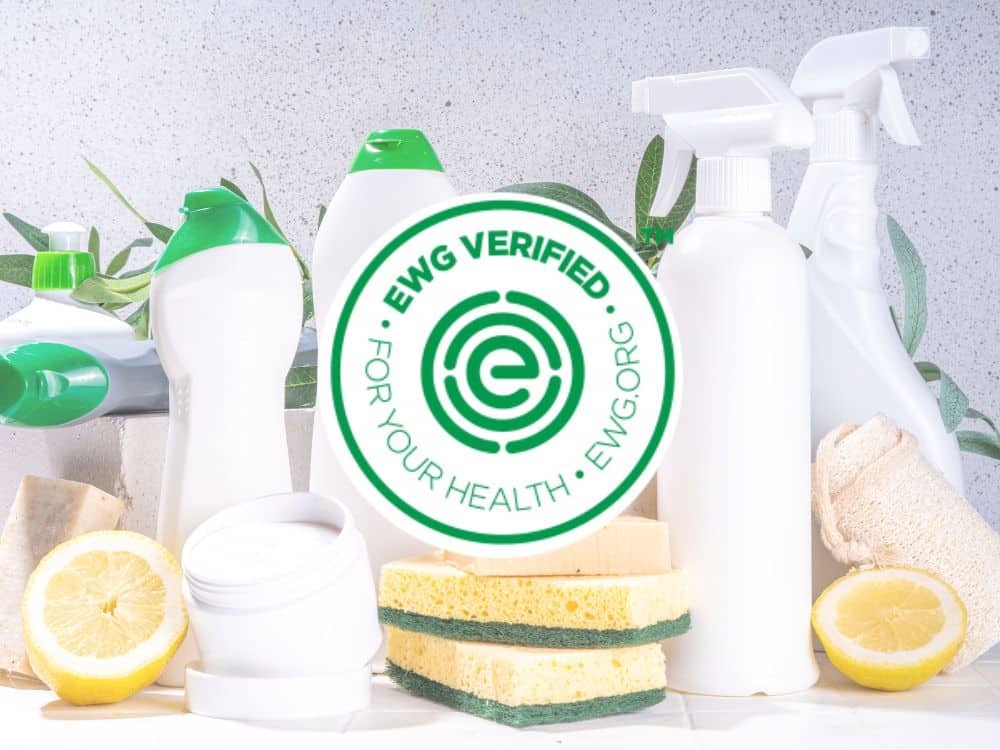
What EWG Verified Certifies: Cosmetics, baby care, skin care, personal and hair care, and eco-friendly cleaning products.
About EWG Verified™ & Certification Prerequisites
The EWG Verified™ seal certifies that a brand’s products meet the nonprofit Environmental Working Group’s stringent standards for total transparency with ingredients and production practices for toiletries, cleaning products, and non-toxic or organic baby products.
EWG Verified™ products likewise cannot contain any trace of their banned “chemicals of concern” (including most toxic ingredients to avoid in skincare).
Over 2000 products carry the seal to ensure consumers know these products are transparent with their ingredients and contain zero toxic or banned substances.
The organization includes a staff of scientists who use peer-reviewed studies to determine things like water safety, agricultural pesticides or toxins, and non-toxic product ingredients.
To earn the seal, a sustainable brand must complete an online application, full disclosure, and pay a fee. EWG then tests and verifies the product’s ingredients using resources like their own openly available Skin Deep® database.
Detractors warn that since verification lasts three years, products may have changed their formula and not have had to re-verify their product yet so it’s important for consumers to still pay mind to the ingredient list, researching any unknowns.
14. bluesign®
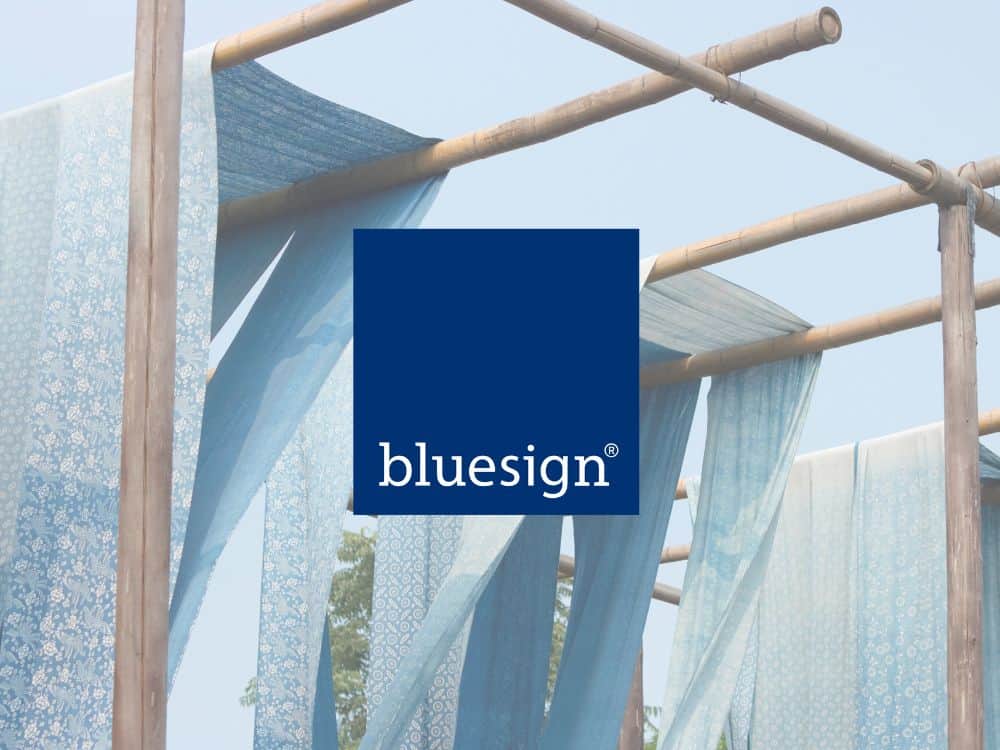
What bluesign® Certifies: Textiles and apparel
About bluesign® & Certification Prerequisites
bluesign® is a well-respected Swiss-based independent monitoring system for the entire supply chain of a textile or garment from start to finish.
But what does it mean to be bluesign® approved?
In their own words, “The bluesign® SYSTEM unites the entire textile value chain to reduce impact on people and the planet.”
While consumer safety is of top concern, their primary focus is to ensure the safety of workers and the environment.
To receive the organization’s mark, clothing must include at least 90% bluesign®-approved textiles and at least 30% approved accessories and trims, like zippers or buttons.
The goal for every brand that is certified by bluesign® is to work toward 100% bluesign® approved materials for all garments and textiles.
bluesign® looks at four impact areas to determine the sustainability of a garment: resource use, occupational health and safety, water and air emissions, and consumer safety against harmful chemicals.
To become certified, brands must divulge all product information to ensure transparency and traceability across all manufacturing steps. This sustainability certification thoroughly checks every stage of the production pipeline.
15. UL GREENGUARD
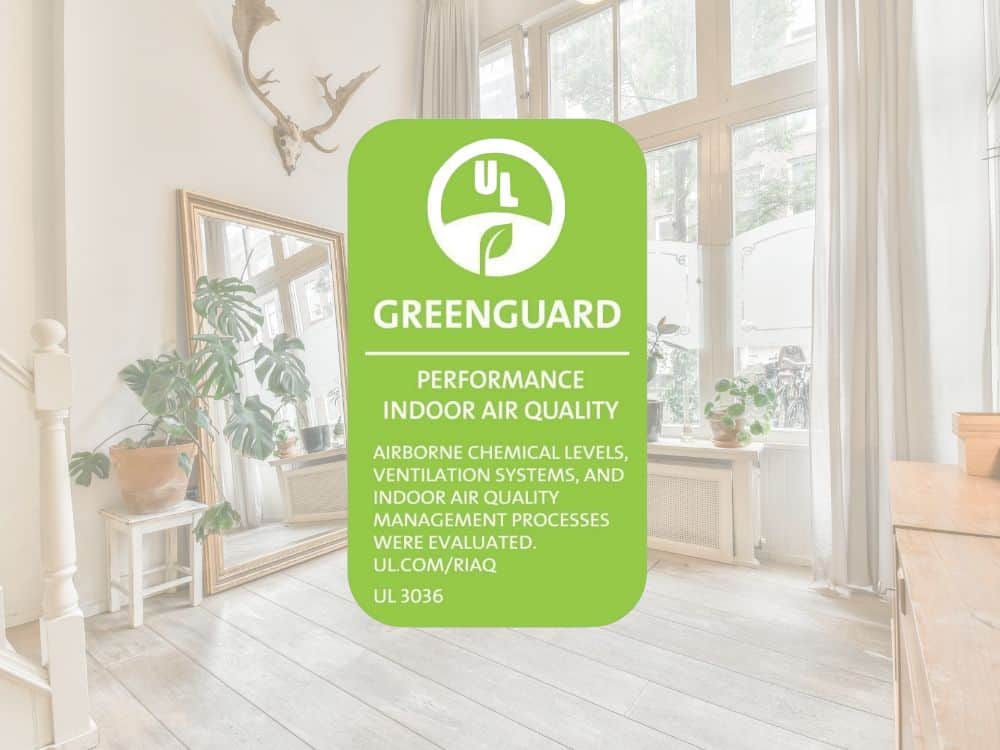
What UL GREENGUARD Certifies: Building materials, sustainable furniture, flooring, interiors, electronics, eco-friendly cleaning products, sustainable mattresses, and certain medical devices
About UL GREENGUARD & Certification Prerequisites
UL GREENGUARD was created through a collaboration between the Environmental Protection Agency (EPA) and the state of Washington to combat the leading form of indoor air pollution: volatile organic compounds (VOCs).
VOCs can take the form of all manner of chemicals used in product production (especially industrially) and they are ubiquitous, in everything from furniture to the building themselves.
The real danger is their potential to offgas these chemicals into the air, contributing to EPA estimates of hundreds circulating in indoor environments—which can cause anything from minor headaches and throat irritation to chronic disease and cancer.
They only certified specific products, not entire entities, and to become certified, that product must be tested for over 300 chemicals and prove all VOC emissions fall beneath a set limit.
Both the product and manufacturing process is subject to “routine testing to minimal impact on the indoor environment”.
Additionally, products can receive the coveted UL GREENGUARD Gold seal of approval, meaning they’re tested for additional chemicals and fall beneath an even lower threshold of VOC emissions. They must also adhere to California Section 01350 requirements.
UL GREENGUARD’s indoor air quality standards also serve as the baseline for LEED certification involving furniture and green building principles.
Did you know we Have a Newsletter?
We cover the latest in sustainable living, fashion, zero waste, beauty, travel, finance and more…
Final Thoughts On Certifications For Sustainability
Rigorous standards and a reliable, transparent verification process are necessary to ensure certifications uphold the sustainability efforts they claim to.
That said, certs are not infallible and greenwashing can tinge even the best. Being counted among the “best” certifications for sustainability is relative and no guarantee of true sustainability.
In order for certifications for sustainability to be more than virtue signaling or a lure for consumers willing to pay more, they must be traceable, and transparent, and make their framework and findings public.
Social and environmental responsibility with true integrity isn’t easy, and no one said it would be.
As long as consumers hold both brands and certifying bodies accountable, there will always be room for growth.
And, like an (organic) garden, time will tell how these certifications grow with the times and demands of a world crying out for a more healthy and more sustainable future for all.
So what are the most reliable sustainability certifications?
Those we really understand to help us vet their claims. So please spread that understanding by passing this article on to friends and family.
Pin these:
